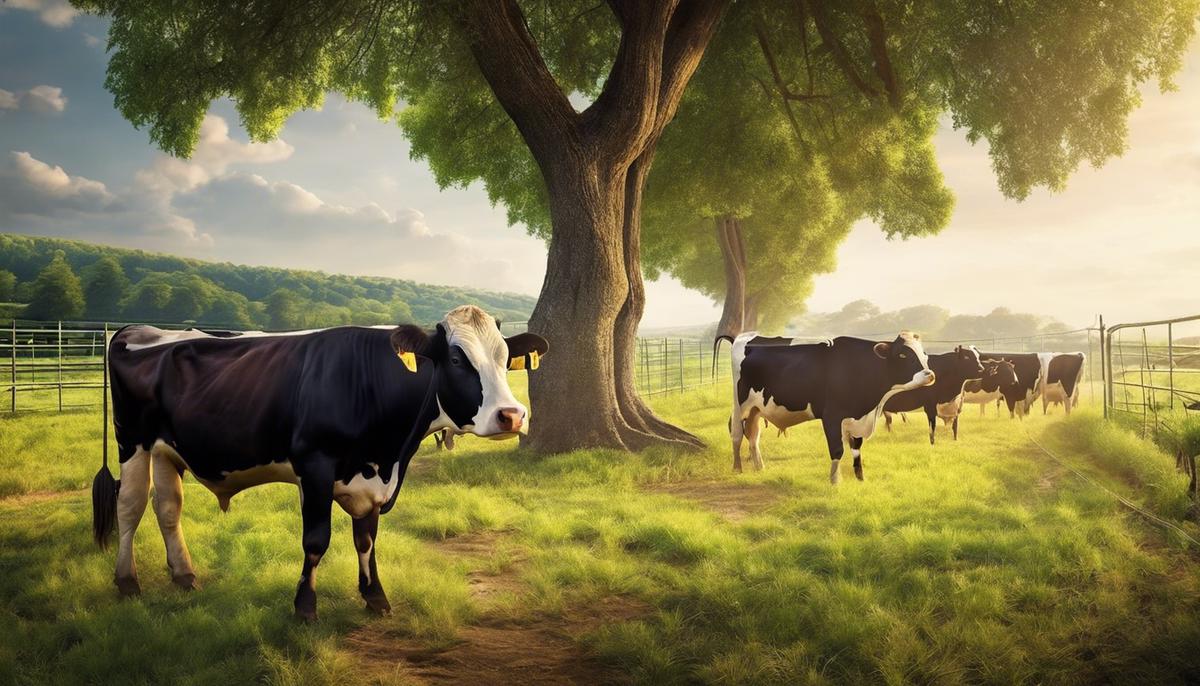

Agridisk
Egypt - Alexandria
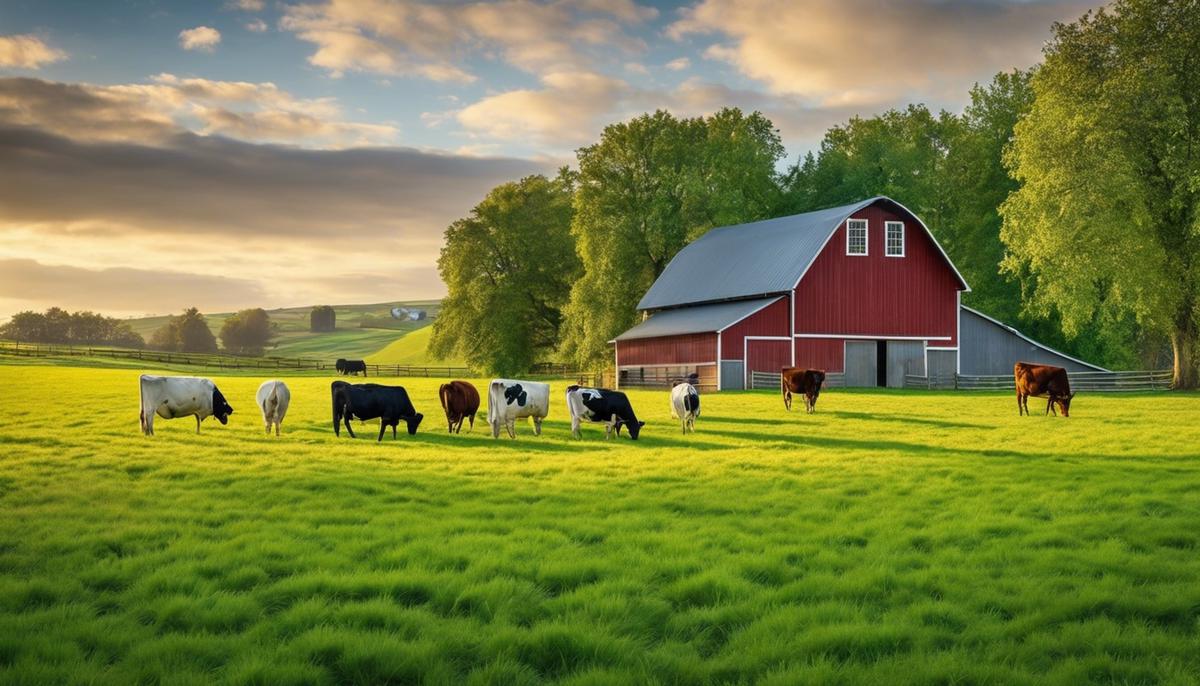
Livestock farming | Definition, Methods, Breeds, & Facts
Description: Livestock farming stands as a fundamental cornerstone of agricultural practice throughout human history, shaping not only our landscapes but also the fabric of our societies. It is an intricate tapestry woven from countless threads – from the dawn of domesticating wild animals to the advanced animal husbandry methods in present times. At its core, livestock farming encompasses the breeding and rearing of animals such as cattle, sheep, pigs, and poultry, aiming to fulfill our nutritional demands and providing materials like leather and wool. The journey from pasturing to modern intensive production has been marked by profound innovations that have escalated the efficiency and scale of this industry, while also casting a spotlight on the pressing issues of animal welfare, environmental sustainability, and global food security. As we delve deeper into this multifaceted realm, we uncover the various production systems, delve into the genetic tapestry that supports industry, confront the ecological ramifications, and peer into the future of livestock agriculture with an eye towards emerging trends and technologies. Abstract: Livestock farming, an enduring cornerstone of the agricultural sector, predicates not only on the raising and husbandry of domesticated animals for the purposes of producing food, fiber, labor, and other products, but also on the nuanced articulation of scientific, economic, and ethical considerations that permeate its modern execution. Livestock farming, a discipline as ancient as agriculture itself, assumes a crucial role in the modern agricultural landscape. It involves the meticulous breeding, raising, and management of animals such as cattle, poultry, pigs, sheep, and goats for the provision of meat, milk, eggs, and other valuable commodities. Beyond its quintessential function of food production, livestock farming contributes significantly to livelihoods, rural economies, and cultural traditions. Contemporary livestock farming practices are steeped in a blend of long-standing traditions and innovative technologies. Precision agriculture, welfare-oriented husbandry, and sustainability are among the foundational pillars of modern livestock enterprises. The judicious application of technological advancements—ranging from improved genetic selection and nutrition to sophisticated health monitoring systems—undergirds an ever-increasing efficiency and productivity in livestock operations. Moreover, the incorporation of biotechnological tools has catalyzed significant strides in animal welfare and disease mitigation. The ascent of modern livestock farming is not without its formidable challenges. A growing global population inflates the demand for livestock products, thus compelling industries to grapple with the competing objectives of efficiency, sustainability, and ethical animal care. Balancing these objectives necessitates a conscientious approach, underscored by comprehensive environmental management practices that address greenhouse gas emissions, land and water use, and nutrient cycling. Integrated crop-livestock systems exemplify one such approach, ensuring ecological balance and resource efficiency. Ethical considerations are intrinsic to livestock farming, revolving around the humane treatment of animals and stewardship of the land. Progressive welfare practices that afford the animals a life devoid of undue stress and pain have come to define responsible farming. Environments that facilitate natural behaviors, along with judicious veterinary care, engender healthier livestock populations and, consequentially, a more robust food system. In conclusion, the essence of livestock farming in the contemporary agricultural milieu intertwines with complex biological systems, human ingenuity, and ethical stewardship. It manifests as not mere animal husbandry, but as a sophisticated symbiosis between humankind and domesticated fauna. To assert its permanence and progression, livestock farming must continue to fortify its pillars of sustainability, welfare, and productivity, anchoring the agricultural landscape of today and molding that of tomorrow. In contemporary discourse on animal husbandry, the impetus of observing the nexus between various farming methodologies and their consequences on livestock welfare and productivity has become of paramount significance. Given the burgeoning demands of the global market, coupled with the inexorable imperative for sustainable practices, the exploration of different farming methodologies unveils divergent impacts on the exigencies of livestock well-being and the efficaciousness of their output. Agroecological Farming Systems have emerged as a paradigm focused on the integration of principles pertaining to ecology, socio-economics, and culture. Here, the livestock is often afforded more natural living conditions, leading to reduced stress levels and diseases. The adherence to such synergetic practices can enhance natural behaviors and social interactions, culminating in improved overall welfare. Indeed, studies have correlated the attenuation of stress in livestock with an uptick in productivity, manifesting as enhanced growth rates, reproductive success, and milk yield. Conversely, Industrial Animal Agriculture, characterized by intensive farming techniques, has been the subject of scrutiny. Within this matrix, the impetus is placed squarely on optimizing production, often at the cost of animal welfare. Here, the confinement of animals to restricted spaces and regimented feeding programs may escalate stressors leading to immunosuppression and increased susceptibility to diseases, thus engendering the antithesis of welfare and productivity. The regimen of systematic interventions like antibiotics, although contrived to mitigate disease outbreaks, has cultivated additional concerns around antibiotic resistance and its concomitant ramifications on both animal and human health. Pasture-Based Systems advocate for practices that allow for grazing and foraging behaviors consonant with the evolutionary predispositions of livestock species. Such systems embody the potential of fostering physical health through exercise and variety in diet leading to balanced nutrition. The affluence of a natural environment fosters psychological well-being in animals that is symbiotically linked to their productivity. Notably, the economic viability of pasture-based systems can be contingent on factors like climate, terrain, and the availability of resources, thus necessitating a circumspect calculation in their implementation. Furthermore, the burgeoning field of Animal Behavioral Science offers a profundity of insights that are instrumental in refining farming methodologies. Through the application of ethological studies to optimize housing, handling, and management practices, modulations can be made to improve welfare parameters. Correspondingly, such modifications are shown to positively affect productivity, as welfare-compliant practices often mitigate against behavioral vices and promote growth. The implementation of biosecurity measures is a sine qua non for shielding livestock from pathogenic onslaughts. The maintenance of stringent hygiene standards within all farming operations serves to safeguard the welfare of livestock, whilst concurrently preserving the qualitative and quantitative integrity of output. In conclusion, the multifarious farming methodologies extant today possess the capacity to differentially impact the welfare and productivity of livestock. An integrated, judicious, and ethically informed approach to animal husbandry must therefore be continuously refined and adapted, ensuring the equilibrium between animal well-being and efficient production. This guardianship over the delicate interplay between welfare and productivity not only adheres to our moral obligations but is imperative for the sustainability of a thriving farming enterprise in a fast-evolving world. Dominant Breeds in Livestock Farming: The Impacts of Genetic Selection As an underpinning of agricultural maturity and food security, genetic selection remains a pivotal tool within livestock farming. The choice of breeds for farming practices is driven by a mixture of historical preference, geographical suitability, and the extensive reach of selective breeding. These factors guide the proclivity toward certain prominent breeds that are superior in productivity, resilience to disease, and ability to thrive under specific environmental conditions. In the bovine contingent, Holstein Friesians command the dairy industry due to their unparalleled milk yield catalyzed by rigorous selection processes favoring high lactation. Simultaneously, in the sphere of beef production, Angus and Hereford breeds have burgeoned in ubiquity on account of their efficient growth rates and admirable marbling characteristics, which proffer a superior quality of meat. Sussex and Texas Longhorn breeds, though less prevalent, have demonstrated adaptive expertise to forage on sparse vegetation, validating their utility in more arduous environments. Swine breeds such as the Large White and Landrace have undergone genetic sculpting to amplify traits sympathetic to commercial production—namely swift growth and larger litter sizes. Their fecundity and feed conversion efficacies serve as exemplars within the porcine domain. Conversely, the Tamworth, esteemed for its ruggedness, confronts adversity with greater poise, a trait unrelinquished by farmers valuing hardiness. Among ovine breeds, the Merino stands as a prodigy in wool production, bearing a dense fleece that has been refined over centuries by intricate genetic selection. In meat production, the Suffolk breed's robust musculature has been accentuated, ensuring it remains a preferred breed on global scales. The poultry sector is no exception to selective pressures with broiler chickens like the Cornish Cross rapidly attaining market weight, while laying breeds like the Rhode Island Red consistently produce an impressive volume of eggs – an achievement resultant from methodical augmentation of desirable traits. Genetic selection has also steered the aquaculture landscape, where the prolific Atlantic salmon has been selectively propagated, augmenting its growth rates and resistance to common maladies. In an era marked by genetic editing technologies, including CRISPR-Cas9, the horizon of animal breeding is vast. The ethical dimensions of such technologic deployment, alongside its ramifications for both the animal genotype and phenotype, invoke rigorous discourse amid the research cohort. It is clear, as scientific enterprise proceeds to unravel the complex tapestry of DNA, genetics will continue to mold the forms and functions of livestock breeds. Such endeavors ascertain the amplification of traits perceived as beneficial for the human conjecture, yet this manipulation is not devoid of consequences. The diminishment of genetic diversity—an inadvertent byproduct of intense selection—imposes a conservation imperative that must be addressed to preserve the robustness of livestock species against unforeseen environmental contingencies and diseases. To culminate, while the axioms of genetic selection have certainly carved the present cadre of livestock breeds, their continued evolution stands as a testament to our commitment to enhance productivity whilst honoring the genetic integrity and welfare of the animals in our stewardship. The dynamics of this domain are under constant scrutinization, as it is abundantly clear that the health of our livestock is irrevocably intertwined with the health of our societies. Intensive livestock farming exerts a multitude of pressures on the ecological sphere of our planet. These ramifications are complex, spanning across various domains, from land degradation to nutrient cycling disruption. Intensive practices are linked to the excessive conversion of natural habitats to pastureland and feed-crop production areas, resulting in biodiversity loss at both species and ecosystem levels. Deforestation, particularly in the Amazon, to accommodate cattle ranching is a poignant example. This not only demolishes ecosystems which are irreplaceable repositories of biodiversity, but it also contributes to the exacerbation of global climate change by reducing critical carbon sinks. Additionally, the monocultures commonly associated with feed crops, such as corn and soybeans, are susceptible to pest infestations, necessitating large inputs of chemical pesticides and fertilizers. These can have substantive deleterious consequences on soil health, affecting its structure, fertility, and microbial diversity. Water usage and pollution are further ecological impacts to consider. Intensive livestock systems are often water-intensive, competing with local communities for this vital resource. Furthermore, waste management is a key issue. Manure and other waste products, if not managed judiciously, can lead to the eutrophication of aquatic environments, due to the runoff of nutrients which have a direct impact on water quality, often resulting in hypoxic "dead zones" in rivers and coastal areas. These zones are inhospitable to marine life, disrupting aquatic food webs and fisheries on which local communities depend. The overuse of antibiotics in intensive livestock farming poses a significant risk to public health through the potential development of antibiotic-resistant bacterial strains, which could then be transferred to human populations. Not only does this have direct human health implications, but it could also lead to reduced effectiveness of antibiotics that are crucial for treating diseases in livestock, with subsequent welfare considerations. Methane emissions are another cornerstone of concern. Ruminant livestock, such as cattle, sheep, and goats, produce methane—a greenhouse gas significantly more potent than carbon dioxide—in their digestive processes. When compounded with the aforementioned loss of carbon sequestering ecosystems in favor of pasture and cropland, the overall contribution of intensive livestock farming to climate change becomes marked. Finally, there is the issue of feed centralization and transportation. The globalization of the livestock feed market has led to a carbon-heavy logistics system, where feed may be produced and processed in one part of the world, and consumed in another, thus contributing to carbon emissions associated with transportation. This centralization also makes the feed supply vulnerable to political instabilities and climatic events in key producing regions. Each of these ecological ramifications necessitates immediate and resolute attention. It requires a conscientious analysis and the implementation of solutions that prioritize sustainability, reduce environmental impact, and maintain ecological integrity while ensuring global food security. The responsibility lies with regulators, producers, and consumers alike to drive change towards environmentally conscientious livestock farming practices that do not merely maximize productivity at the expense of our planet's health. Indeed, the intricate balance between agricultural practices and ecological sustainability is not merely a philosophical concern, but a tangible necessity for the preservation of our biosphere and the assurance of future generations' well-being. As the imperatives of sustainability and environmental stewardship become increasingly pressing, the innovation of alternative protein sources for livestock feed presents a paradigm shift in farming practices. Conventional feeds, typically reliant on resource-intensive crops such as soy and corn, impose significant ecological footprints. Thus, research has guided the development of proteins derived from less conventional sources—algae, insects, and single-cell organisms such as yeast. Algae, for instance, not only serves as a rich source of protein but also offers the benefit of omega-3 fatty acids, essential for animal health. Insect-based feeds, utilizing species like the black soldier fly larvae, efficiently convert organic waste into nutrient-rich protein, embodying the principles of a circular economy. Such innovations not only mitigate reliance on traditional crops but also enhance the feed conversion ratios, bolstering the overall efficiency of livestock production. Taking a proactive rather than reactive approach to animal health is critical in supporting the longevity and productivity of livestock operations. The frontier of genomics allows for the identification and breeding of disease-resistant animals. By understanding the complex interactions between livestock genetics and prevalent pathogens, breeding programs can deploy strategic measures to cultivate herds with enhanced resilience to diseases. This genetic fortification reduces the dependence on pharmaceutical interventions, aligning with the broader objective of responsible antibiotic stewardship and addressing public health concerns around antibiotic resistance. Illuminating the connection between gut microbiota and overall animal health has opened new avenues for optimizing livestock productivity. Microbiome research provides insights into how dietary adjustments can promote beneficial gut bacteria, enhancing digestion, nutrient absorption, and immune function. Such microbiome-centric approaches can naturally improve weight gain, reproductive outcomes, and resistance to stress – factors that collectively define productivity in livestock farming. Breakthroughs in digital technologies and the Internet of Things (IoT) are reshaping the landscape of livestock management. Sensory technologies, integrated with artificial intelligence (AI) systems, enable real-time monitoring of animal health indicators, including vital signs, movement, and behaviors indicative of stress or illness. This granular level of monitoring supports timely interventions and a transition towards more individualized animal care regimens, despite the large scales typical of modern farming operations. The concept of vertical farming and hydroponics – typically associated with horticulture – holds remarkable potential for developing sustainably cultivated feedstocks. By maximizing space and implementing closed-cycle water systems, these innovative agricultural modalities can produce fodder with minimal land and water input. High in nutritional content and grown in controlled environments, these vertical farm-produced feeds can contribute significantly to the long-term sustainability of livestock farming. Lastly, the pivot towards renewable energy sources within livestock farming spheres cannot be overstated. Solar and wind energy solutions, assimilated within farms, curtail greenhouse gas emissions and operational energy costs. Methane digesters turn waste into both a renewable source of energy and a reduced-emission fertilizer alternative. These technological incorporations not only serve to lower the carbon footprint but also enhance the energy independence of livestock enterprises. In summary, the potential for transformative change in livestock farming practices is embodied by these innovations and trends. As pressures mount to reconcile productivity with sustainability, these advancements provide auspicious pathways towards an environmentally consonant, yet economically viable, future in livestock agriculture. Through the prism of livestock farming, we witness a narrative of continuous adaptation and advancement – a sector perpetually on the cusp of transformation. The entwinement of socioeconomic, ethical, and environmental factors presents a complex challenge to the industry, compelling it to evolve in alignment with global change. As stakeholders in this vast agricultural tapestry, we must remain vigilant and proactive in shaping a future that upholds both production efficiency and planetary stewardship. The ongoing refinement of our methods, coupled with a dynamic regulatory landscape and consumer consciousness, will chart the course for a livestock farming paradigm that honors both human needs and the intrinsic value of the natural world. We thus stand at a crossroads, with the power and responsibility to nurture an industry that can sustainably feed generations to come while fostering an ethical and environmentally conscious ethos. As global consciousness shifts towards sustainable agriculture, organic farming has taken a prominent role in the quest for food production that aligns with environmental stewardship and animal welfare. At the heart of this movement is the livestock sector, where the choice of cattle breeds is pivotal. The ideal cattle for organic farming are those that not only respect the holistic principles of organic agriculture but also thrive within its constraints. This essay delves into the multi-faceted aspects of selecting the best cattle for organic farming—examining genetic traits and behaviors that promote adaptability to pasture-based systems, influence on milk and meat quality, implications for sustainability and the environment, as well as economic and regulatory considerations that shape the organic livestock industry. As we embark on this exploration, it is essential to understand that the breed of cattle chosen can make a significant difference in fulfilling the overarching goals of organic farming. Organic farming has established itself as a critical approach to sustainable agriculture, requiring a harmonious relationship between land, plants, and livestock. The paradigms governing this method of farming stress the importance of adapting to and respecting natural life cycles. Cattle, as integral components of this system, display varying breed-specific genetic and behavioral characteristics that make them more or less suited for organic farming practices. One fundamental aspect of cattle genetics is the breed's inherent hardiness and resistance to disease. Organic farming is characterized by limited use of synthetic medications, thus breeds with robust natural immunities and the ability to withstand local climatic conditions without substantial human intervention are favored. For instance, the ability of a Scottish Highland cow to resist cold or the African Nguni's resistance to tick-borne diseases exemplifies the kind of genetic resilience suited for organic farming. Another critical factor is the breed's foraging behavior and dietary adaptability. Organic systems typically rely on pasture-based feeding, thus selecting cattle that efficiently convert a high-forage diet into meat or milk is essential. Cattle such as the Jersey cow, known for efficient milk production from grass, or the Red Angus, proficient in grazing diverse plant species, demonstrate this preferred efficiency and adaptability. Moreover, maternal instincts and reproductive efficiency play a pivotal role. Breeds with a strong mothering ability ensure higher calf survival rates without the need for intense human management. Similarly, a breed's natural inclination for unassisted births and regular reproductive cycles aligns with the organic ethos of minimal intervention. Lastly, a docile temperament is vital for the integration within an organic system. Cattle with a calm disposition are easier to manage, particularly when synthetic tranquilizers or restraints are not an option. Breeds known for their placid nature, such as the Dexter or the Brown Swiss, can exemplify these behavioral traits conducive to the organic environment. In conclusion, the optimal suitability of cattle breeds for organic farming is a multifaceted consideration, encompassing genetic resilience, efficient foraging habits, reproductive self-sufficiency, and a tranquil temperament. It is crucial to align the selection of breeds with these criteria to harness their full potential within an organic agricultural framework. The decision to engage a particular breed of cattle in the production of organic milk and meat is not merely a matter of preference or convenience. This pivotal choice extends its influence to the very essence of the final product's quality and attributes. Here, we delve into the nuanced ways in which cattle breed selection affects the organic milk and meat that ultimately reaches consumers. Nutritional Profile Variation: Organic milk and meat are lauded for their superior quality and health benefits. These advantages are significantly impacted by breeds, as they can alter the nutritional content of milk, such as fat and protein ratios. Different breeds produce milk with variable concentrations of beneficial fatty acids, impacting not only the taste but also the healthfulness of the milk. Similarly, the breed can affect the meat's intramuscular fat—the marbling—which imparts flavor, tenderness, and nutritional value. Environmental Adaptability and Sustainability: The breed of cattle can substantially affect the sustainability of organic farming practices. Certain breeds thrive in local environmental conditions, making them more suitable for pasture-based organic systems. This compatibility between breed and environment ensures that the cattle can utilize the available natural resources efficiently, reducing the need for external inputs and minimizing the ecological footprint of the practice. Product Consistency and Quality Assurance: When consumers purchase organic products, they often have expectations regarding consistency and quality. Breeds that have been selected and refined for organic production typically yield more reliable outcomes in terms of milk composition and meat quality. These consistent results are conducive to consumer trust and enhance the credibility of organic products in the market. Ethological Considerations and Animal Welfare: Cattle breeds differ in their inherent behaviors and stress responses. Organic standards emphasize animal welfare, and selecting breeds that are well-suited to organic farming conditions—such as those that cope better with outdoor environments and display less stress in a free-range setting—translates to higher welfare standards. Well-adapted breeds exhibit natural behaviors more freely, leading to improved health and well-being which in turn reflects in the quality of milk and meat. Processing and Culinary Attributes: The breed of cattle can have a practical impact on the processing efficiency and the culinary characteristics of organic milk and meat. Certain cattle breeds yield milk that may be better suited to cheese-making, for example, due to its specific protein content, while others may provide meat that is preferred for its tenderness and cooking properties. These attributes are crucial for producers and chefs alike who seek to offer superior organic dairy and meat products. Ultimately, the deliberate selection of cattle breeds for organic production is a critical facet of the organic agricultural realm. This nuanced aspect of farming not only dictates the direction of sustainable agriculture but also imbues organic milk and meat with distinctive qualities that are cherished by consumers. Responsible breed selection, thus, represents a linchpin in the endeavor to deliver products that are not only organic by certification, but also organic in essence and quality. The symbiotic relationship between specific cattle breeds and the ecological milieu of organic farms is multifaceted, and extends well beyond the parameters of genetic resilience and ease of management. This discussion seeks to bridge further understanding pertaining to the nuances of breed contributions to organic farm sustainability and environmental impacts. One of the cornerstone attributes of cattle breeds in an organic setting is their carbon footprint. Certain cattle are more efficient converters of feed into body mass, thereby reducing greenhouse gas emissions per unit of milk or meat produced. Heritage breeds, for instance, are often aligned with lower input systems due to their evolutionary paths which have favored minimal resource consumption and maximized output—vital for organic farm viability. Furthermore, the integration of appropriate cattle breeds on organic farms may enhance local biodiversity. Grazing practices—when managed correctly—can maintain and improve soil health and structure, support bio-diverse ecosystems, and reduce the need for external inputs such as synthetic fertilizers. Specific breeds known for their grazing efficiency can play a pivotal role in sustaining pasture ecosystems by promoting the growth of diverse plant species, which in turn supports a variety of invertebrates and birds. Cattle breeds can also differ markedly in their impact on soil integrity. Certain breeds, through their grazing patterns, contribute to soil compaction to a lesser extent than others. Lighter breeds or those with less aggressive grazing behaviors can significantly reduce the wear and tear on pastureland, an aspect critical to maintaining the ecological balance of the organic farm. Additionally, a breed's propensity for longevity and hardiness translates into fewer inputs needed over the animal’s lifetime. Long-living breeds reduce the need for frequent replacements, and their hearty natures minimize medicinal interventions, in alignment with organic principles. The disposition of a breed to thrive under organic management practices, including limited veterinary interventions, suggests an alignment with sustainable farming embodied by increased animal welfare standards. Lastly, breeds that are predisposed to thrive in the specific climatic conditions of the farm location demonstrate an alignment with the principles of sustainable agriculture. For example, in arid regions, breeds with a high tolerance for heat and water scarcity are invaluable. Contrarily, in cooler climates, breeds with dense hair coats and a robust constitution are more fitting. This context-specific adaptation minimizes environmental stress and aligns with the ecological carrying capacity of the land. In conclusion, the deployment of specific cattle breeds in organic farming should be viewed as a targeted approach to optimize the intricate dance between agricultural productivity and environmental stewardship. It subscribes to a vision of sustainability that is rooted in the profound understanding that the health and viability of organic farms are inexorably linked to the nuanced contributions of these sentient beings. Continuing from the comprehensive analysis of cattle breed selection for organic farming, it is imperative to examine the economic factors at play. The task at hand is not merely one of agricultural preference but one of sound financial stewardship in an organic system. A paramount consideration is the initial investment that encompasses the purchase price of cattle breeds. Organic farmers must balance the cost of acquiring cattle with the expected return on investment. Heritage breeds, while often more adapted to organic systems, may come at a premium, but their longevity and reduced need for medical intervention can result in long-term savings. Feed efficiency should also be a focal point. Some cattle breeds convert feed to body mass more efficiently than others, allowing organic farmers to make the most of their pasture-based systems. A breed with high feed conversion efficiency often translates to reduced feed costs, which is a major expense in cattle farming. Another economic aspect is the potential for multiple revenue streams that some breeds offer. Dairy breeds that also have decent beef qualities, for instance, can provide milk as well as meat, maximizing profits from the same animal. This dual-purpose nature can be especially lucrative in organic markets where both organic milk and meat command higher prices. The market demand for specific breeds and their products cannot be overlooked. Organic farmers must have their fingers on the pulse of consumer preferences, ensuring that the breed they select aligns with what consumers are prepared to pay a premium for, be it for meat quality, milk richness, or the narrative of preserving heritage breeds. Lastly, the potential for government incentives for maintaining breeds that contribute to the agricultural heritage or sustain local ecosystems is a factor worth investigating. These incentives can mitigate some of the costs associated with rearing less conventional breeds on an organic farm. In navigating these economic waters, the selection of cattle breeds for organic farming becomes as much an exercise in economics as it is in agronomy. The astute farmer will marry the biological and behavioral merits of their cattle with a sound economic strategy, ensuring the viability and prosperity of their organic enterprise. Regulatory Standards Driving Cattle Selection in Organic Production In addressing the underpinnings that inform the selection and management of cattle within organic agricultural systems, one must consider the comprehensive regulatory framework that governs such practices. Integral to both the success and sustainability of organic farming are the stringent criteria mandated by certification bodies, as well as national and international directives aimed at preserving organic integrity—from farm to table. Organic regulations substantially impact breeding programs by stipulating measures that prioritize animal welfare and environmental conservation. Such guidelines necessitate that cattle within these systems are not only selected for intrinsically robust health profiles but also for their ability to thrive in natural rearing environments without reliance upon synthetic aids, such as antibiotics or hormones, which are conventionally utilized in non-organic sectors. Additionally, the principles of organic farming align closely with the aim of promoting biodiversity. Regulations promote the use of breeds adapted to local conditions, thereby supporting resilient farm ecosystems. This is reflected in farmers' selection strategies, wherein the harmonious fit between cattle breed and farm ecosystem underpins long-term vitality and productivity. For example, regulations may endorse the preservation of rare breeds, which, although they may not match the output of more intensively selected breeds, offer genetic diversity that can be critical for adapting to climate variability and disease challenges. The nutrition of livestock is also rigorously controlled within organic regimes, which endorse an imperative towards the use of organic feed. This requisite profoundly affects the economic facet of cattle management, as the feed must be not only organically produced but also furnish the complete nutritional needs of the livestock, inherently influencing the economics of breed selection. Breeds with superior native traits for feed efficiency, aligned with the capacity to graze on a wider variety of forage, become prime candidates for organic operations. Certification standards extend to the land on which cattle are grazed. Key to organic farming is the sustainable management of land resources, requiring a selection for breeds that are compatible with rotational grazing practices and that contribute positively to soil health—minimizing erosion and enhancing soil fertility. Cattle that exhibit a more balanced grazing behavior and that distribute manure effectively can bolster soil biota and structure—an aspect profoundly valued by regulatory parameters. Furthermore, organic standards have a pivotal role in outlining the humane treatment of cattle, encompassing housing, healthcare, and handling to ensure a life conducive to natural behavior. The requirement for animals to have access to outdoor spaces, for example, demands breed selection that factors in animals' ability to cope with the elements and exhibit natural behaviors. Thus, breeds with a propensity for enhanced social structures and foraging in diverse environments align with the tenets of organic regulations. A consideration that must not be overlooked is the alignment of organic farming regulations with consumer expectations, which increasingly emphasize not only the quality and safety of food but also the ethical and ecological implications of its production. The chosen breeds must therefore meet these multifaceted demands—high-quality products, produced in a manner that consumers are willing to support, both ethically and financially. In effectuating the selection and strategic management of cattle within organic frameworks, the intersection of regulatory mandates with ethical, environmental, and economic considerations becomes non-negotiable. The breeds that flourish under such rigorous expectations are those that are not merely adapted to but symbiotic with the core values of organic agriculture—health, ecology, fairness, and care, thus exemplifying the harmonious integration of agriculture into the broader tapestry of sustainable human endeavors. The selection of cattle breeds for organic farming is a decision with far-reaching consequences, melding the needs of animals, farmers, consumers, and the environment. The intricacies involved in breeding, raising, and maintaining these animals under organic principles underscore the importance of thorough consideration and mindful decision-making. With a keen awareness of the genetic traits conducive to organic systems, alongside a firm understanding of regulatory frameworks and market dynamics, farmers can employ strategies that not only sustain their livelihoods but also contribute to the broader goals of organic agriculture. As the organic livestock sector continues to evolve, so too will its impact on the world, paving a path that respects the delicate balance of nature while providing nourishing, high-quality food produced thoughtfully and responsibly.Livestock farming | Definition, Methods, Breeds, & Facts
Defining Livestock Farming
Livestock Farming: The Sinews of Modern Agriculture
Introduction:
Modern Practices:
Challenges and Sustainability:
Ethics and Welfare:
Conclusion:

Methods of Livestock Production
The Interplay Between Farming Methodologies, Livestock Welfare, and Productivity
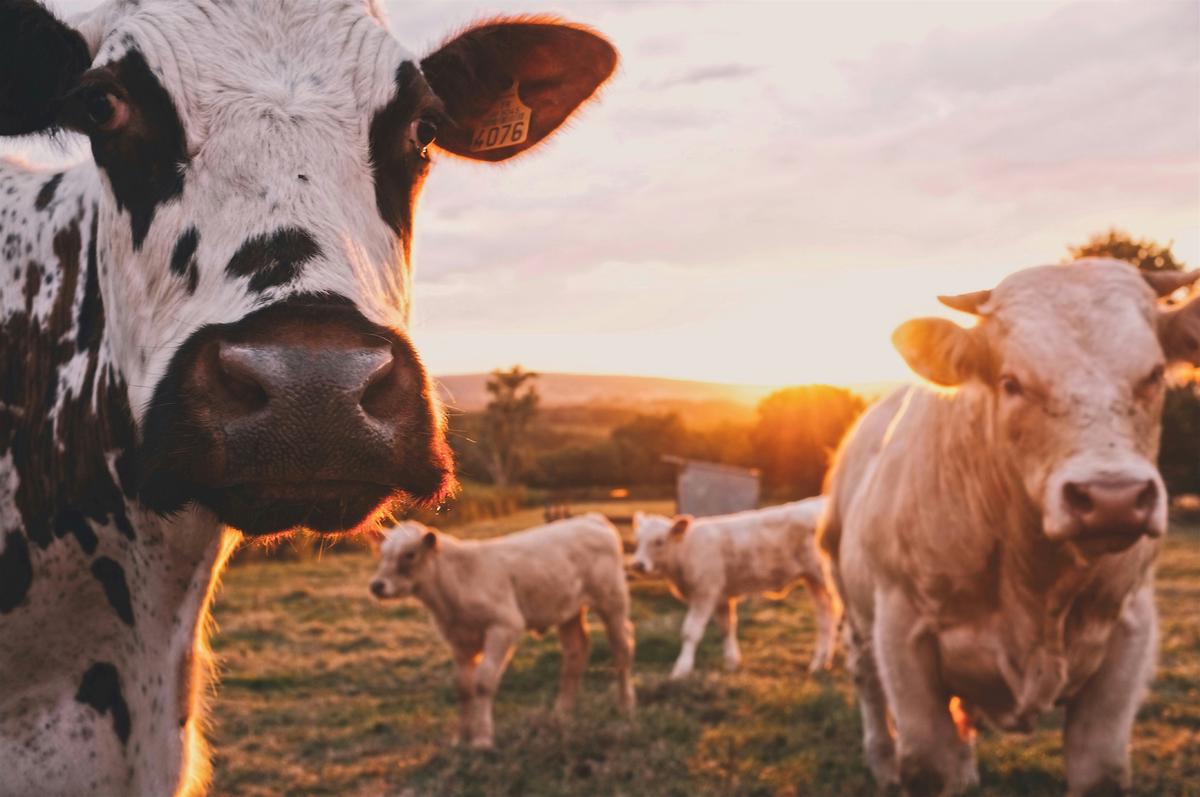
Breeds and Genetics in Livestock

Environmental Impact of Livestock Farming
The Ecological Ramifications of Intensive Livestock Farming
Future Trends in Livestock Farming
Advancements in Alternative Protein Sources: Rethinking Feed Efficiency
Harnessing Genomic Insights for Disease Resistance
The Role of Microbiomics in Animal Health and Productivity
The Emergence of Digital Livestock Management
The Potential of Cultivated Feedstocks and Vertical Farming
Renewable Energy Integration in Livestock Operations
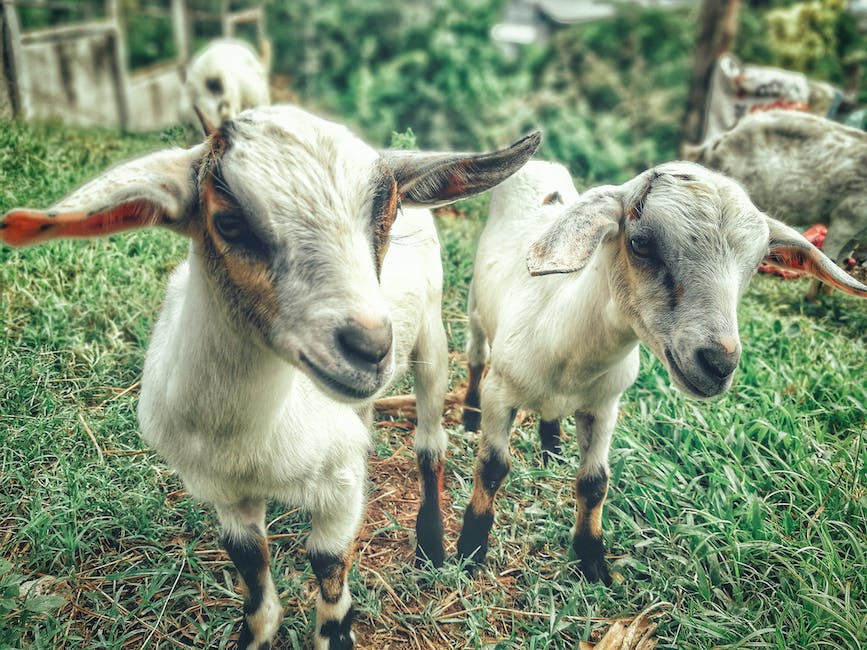
What are the best cattle for organic farming?
Characteristics of Ideal Organic Farming Cattle
Genetic and Behavioral Foundations of Cattle for Organic Farming

Impact of Breed on Organic Milk and Meat Quality
The Significance of Cattle Breed Selection in Shaping Organic Milk and Meat Quality

Sustainability and Environmental Impact of Cattle Breeds
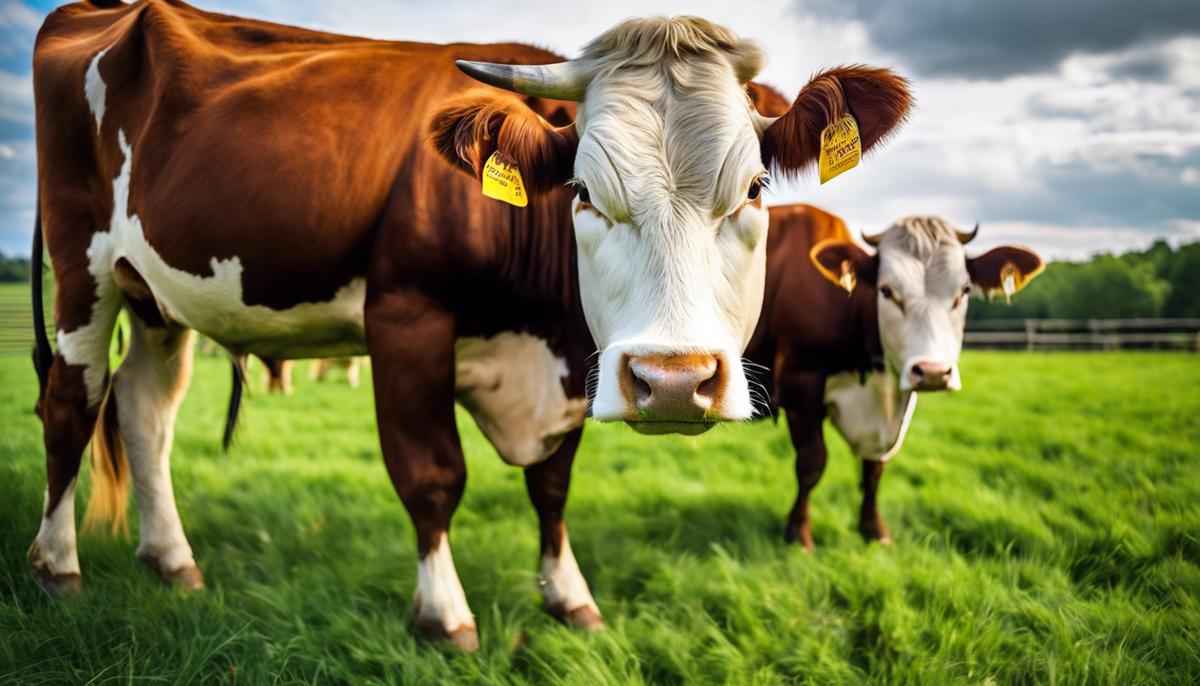
Economic Considerations for Organic Cattle Farming
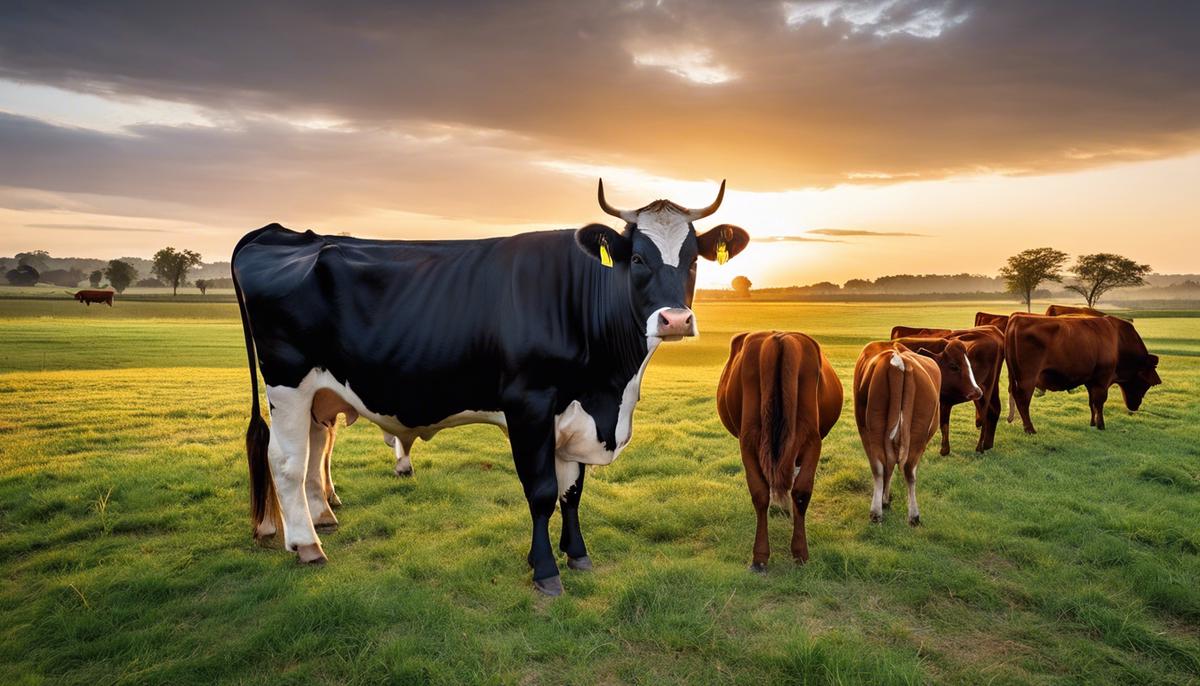
Regulatory Framework and Certification for Organic Cattle
